Modern design fashion in the interior and architecture is at the stage of revising the classic styles that have been formed over the centuries. The outlook on the functionality of housing, its ergonomics and aesthetic expression is being revised. At the same time, there is a rather narrow layer of directions that have appeared relatively recently. These include the Bauhaus style, which originated at the beginning of the last century and still retains the basic principles of organizing living space in the industrial era.
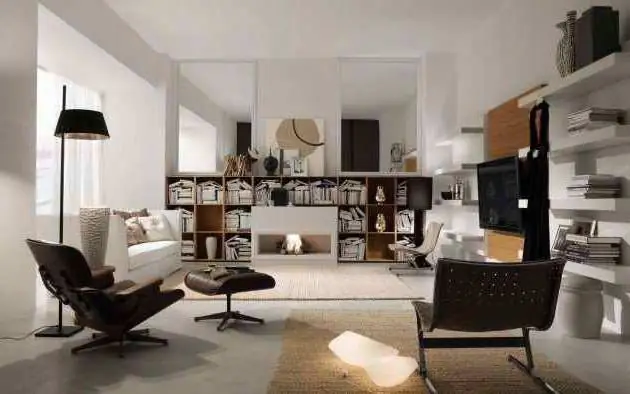
General style information
The origins of the style took place in Germany in the 20s. The ideologist of the direction is W alter Gropius, who in 1919 occupied the chair of the head of the school of design and construction. On its basis, a circle of designers and architects was organized, who developed the concept of style.
It should be noted that the shade of industrialism is not the only thing that was reflected in the new concept by that time. The founders of the direction sought to embody in it the needs of a new person of that time. Oddly enough, much of what was laid down in the original principles is still relevant today. At the same time, the Bauhaus is an architectural style thatgoes far beyond interior design. And this concerns not only stylistic features, but also structural design, shapes and materials.
Principles of style
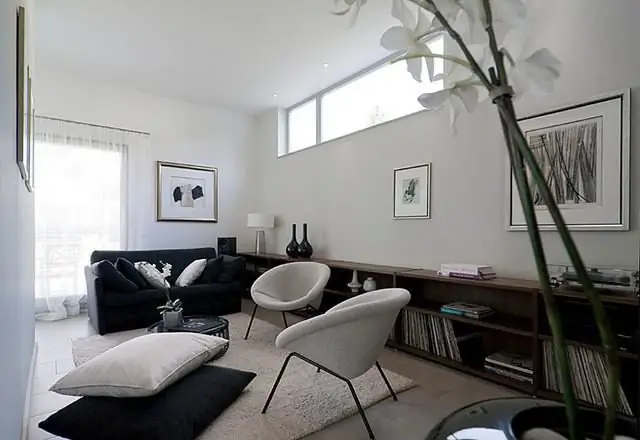
The style is based on the principle of fusion of craft and applied art. This means that the artist becomes a creator and craftsman on the same level as artisans, offering his works to ordinary consumers. In other words, the style offers the creation not of purely practical forms and objects, but of genuine works of art that take place in an architectural ensemble or in the interior of a private house.
To combine art and handicraft, the principle of coordinating the efforts of specialists of different profiles was formulated, who could together solve artistic, technical and economic problems that inevitably arise at different stages of construction. At the moment, the Bauhaus is a design style that can be characterized as functional, simple and at the same time modern. The concept of the direction, unlike many styles, does not discard the idea of arranging housing with the introduction of manufacturability. And if for the direction of high-tech such solutions in many ways look like elements of aesthetic expression, then the Bauhaus uses them for practical purposes.
Materials to reflect style
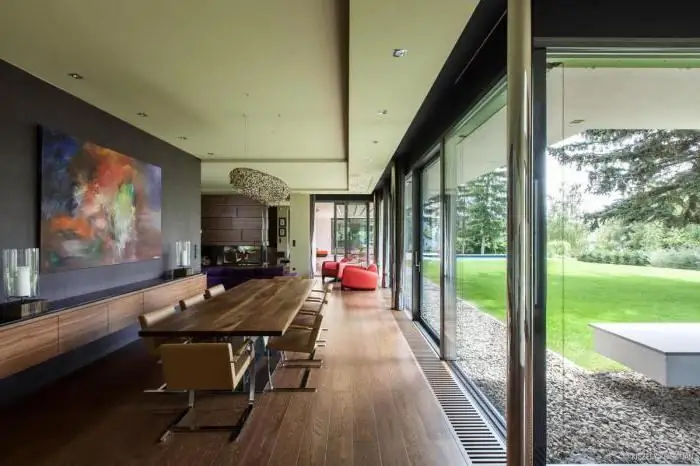
The style imposes few restrictions on the choice of material base, but there is a clear bias towards heavy, durable and reliable structures. In particular, the main material can bename metal. Today, it is practically not used in interiors, but exterior decoration may well be done using metal siding, profile structures and beams.
The rooms are dominated by plastic and glass surfaces. But even in this case, it should be noted that both materials must undergo special processing - impregnation or hardening to give strength and reliability. There is also a place for leather goods, which adorn Bauhaus-style houses, also bringing shades of naturalness. As for the direct finishing of surfaces, plaster is the main means of decorating walls for this style. At the very least, it acts as a basis on which both painting and wallpapering can be applied.
Colours
Perhaps this is one of the most democratic styles in terms of choosing colors. Through the shades of surfaces and decorative elements, the Bauhaus is practically not expressed. In such houses you can find both cold and warm colors. On the other hand, you can choose the tactics of following the spirit of the industrial style. And then again, a heavy or at least neutral texture will come to the fore, emphasized by beige, gray and even black colors.
But at the same time, one cannot say that conservatism and asceticism are the main things that should reflect the style in the Bauhaus interior. The photo below shows that this direction can also be characterized by shades of play and contrast. Adding blue, yellow and green shades will dilute the boring palette and hardly make the interior less attractive andaesthetically expressive.
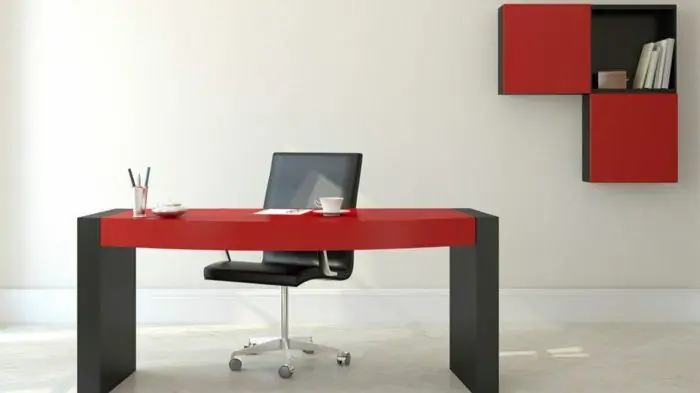
Lighting Requirements
If there is some freedom in the choice of color design, then there are quite specific rules for lighting. First of all, the organization of placement of devices should be divided. Each functional zone in the room has its own group of sources. Moreover, the emphasis is on built-in lamps, large chandeliers, floor lamps and ceiling lamps. And in this context, we can emphasize the similarity of the modern fashion for LED spotlights and the Bauhaus style, which also gravitates towards functionality and manufacturability. Luminaire models should be chosen according to the criteria of power, massiveness and brightness. There should be a lot of light, but at the same time one must remember about comfort for the eyes. For example, it is advisable to use LED sources only in equipping the ceiling. And for classic designs in the same floor lamps and chandeliers, use ordinary incandescent lamps.
Suitable pieces of furniture
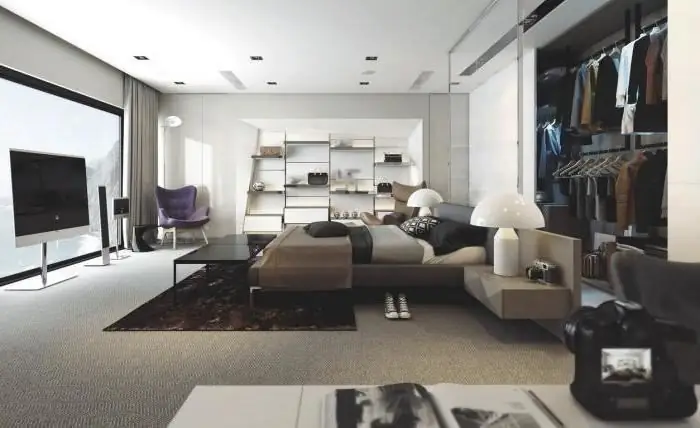
Practicality dominates in the approach to organizing furniture. Sometimes even to the detriment of ergonomics. So, designers recommend abandoning chairs with armrests and additional devices that increase comfort. The best choice would be compact, transformable items that will not take up much space and allow rational use of their functions. In terms of materials, we can recall that the Bauhaus is a style in the interior that focuses on metal, plastic and glass. Indeed, the fashion for eco-styles in this design is not traced, which, however, has its positive aspects. Cases made of plastic and metal are durable and functional, although they do not always look aesthetically pleasing, like furniture made from natural materials.
Decor elements
The style is indifferent to decorative materials and especially decorations as such. It is not worth completely abandoning such a design, but it is desirable that it carry a certain semantic load. These can be commemorative paintings, photographs, family candlesticks, etc. At the same time, the Bauhaus style does not impose restrictions on the combination of aesthetic appeal and functionality of interior components. This means that you can bring in the desired shades of decor through textiles, carpets, the same wall decoration and lighting devices. Each element should be chosen based on the overall style of the room, which is emphasized within the Bauhaus direction.
Reflection of style in architecture

This direction in architecture was originally focused on the construction of apartment buildings. These were three-four-story houses that formed entire settlements for workers. Accordingly, we could only talk about apartments of a small area, from which there is a certain desire for minimalism. For example, the Bauhaus style in architecture involves the arrangement of monochrome smooth surfaces. If we transfer this genre to the modern soil of the construction of private houses and cottages, then it can organically fit intospace optimization concept. It will be a house, in the construction of which inexpensive building materials were rationally used. The idea of frame construction based on house sets is also close to this direction. In this case, the building construction process itself will be optimized.
Conclusion

From the point of view of a modern resident of the metropolis, this style offers many interesting and original solutions. Due to minimal resources, it allows you to organize an original unique interior. But you should also take into account the limitations that distinguish Bauhaus-style houses - both in external design and in internal design. In particular, you will have to abandon the increased comfort and decorativeness. These qualities are already provided according to the residual principle, and the first place is given to functionality and simplicity. At the same time, there are no restrictions regarding the use of modern communications, technological equipment and apparatus. As in the period of its inception, so today this style goes towards technical progress and welcomes new means that expand the possibilities of exploiting living space.






